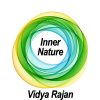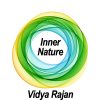Inner Nature: Parasitoids

By Vidya Rajan, Columnist, The Times
Beekeepers need no homily on the awesomeness of insects, nor do picknickers need one on the annoyance of midges, mosquitoes and ants and yellowjackets. These well-known insects make up only a small fraction known insects. To put numbers in context, a figure compiled by the International Union for Conservation of Nature Red List of Threatened Species lists numbers...
Inner Nature: Great Migrations

By Vidya Rajan, Columnist, The Times
It’s migration season. The males have left, and I expect that the females will leave soon too. Flying geese honk overhead, the plethora of robins pecking in the garden have moved on, and the birdseed in the feeders lasts much longer with the insatiable starlings gone. With the big task of seasonal travel underway or looming for these and other animals, I will...
Inner Nature: Magnetic field sensing in animals

By Vidya Rajan, Columnist, The Times
In my previous Inner Nature article, the focus was on animals which make or use electricity to protect themselves or to apprehend prey. In this article, the focus moves to animals which sense and use magnetic fields. The staggering feats of navigation prowess of birds and butterflies are thought to be made possible by the Earth’s magnetic field to guide them to...
Inner Nature: Animal electricity

By Vidya Rajan, Columnist, The Times
All living organisms are electric, since it is electricity – the movement of electrons – that powers life with energy. Then that energy, obtained from light or food, can be used to move molecules around the body or join atoms to make new molecules. That, in summary, is the process of metabolism. Rather than examining metabolic processes in this article, I will...
Inner Nature: Party Season

By Vidya Rajan, Columnist, The Times
Tipple. The season is the reason. Well, with party season behind us now, let’s delve into the ubiquity of alcohol during the holidays. It is considered a conversational lubricant and socially acceptable to drink in a group setting, but it is considered a problem when someone drinks alone without an interlocutor, or for the purpose of getting drunk. It can also...
Inner Nature: Cooperation versus Competition

By Vidya Rajan, Columnist, The Times
Nobel Laureate William Golding’s book, Lord of the Flies, tells of a group of young boys accidentally marooned on an island, who lost every smidgin of “civilization” and reverted to clannism, competition, and eventually to savagery: they kill the boys who show thoughtfulness. The book’s title became shorthand for the beast inside us all which needs to be...
Inner Nature: Cannibalism – proscribed or protein?

By Vidya Rajan, Columnist, The Times
Expose a young mouse mother to a stressful stimulus – say a sudden loud noise – and she may eat her own pups. Rough for the young. But what turns a mother from nurture to cannibalism in an instant? Bees will also eat their young – younger larvae first – under some circumstances ([1]). And humans too. Why do they do it?
Cannibalism, which is the consumption...
Inner Nature: Wasps, ants and bees

By Vidya Rajan, Columnist, The Times
Summer. A time to kick back, relax and read, or listen to podcasts.
I enjoy podcasts, especially science podcasts. Two of my favorites are The Infinite Monkey Cage from the BBC and Ologies with Alie Ward. Both are erudite but also light-hearted and don’t take themselves too seriously – which is one of the failings of politicians, economists and some scientists,...
Inner Nature: The nature of instinct

By Vidya Rajan, Columnist, The Times
One of the unexpected sights driving around my neighborhood in Chester county is seeing an adult male peacock with a magnificent tail walking about the streets. Peacocks are native to the tropics, and are the national bird of India. This peacock was probably bought as a pet, maybe as a pair, maybe alone. He’s since become feral, and has no partner. He has a big...
Inner Nature: Inosculation

By Vidya Rajan, Columnist, The Times
I was taking a walk the other day (in a tropical country) and came across limbs from two trees that had twisted around each other and had actually grown into each other, presumably sharing their vasculature at the point of contact. These kisses are termed inosculation. It happens when the bark between the abutted limbs wears away due to friction and the vascular...



